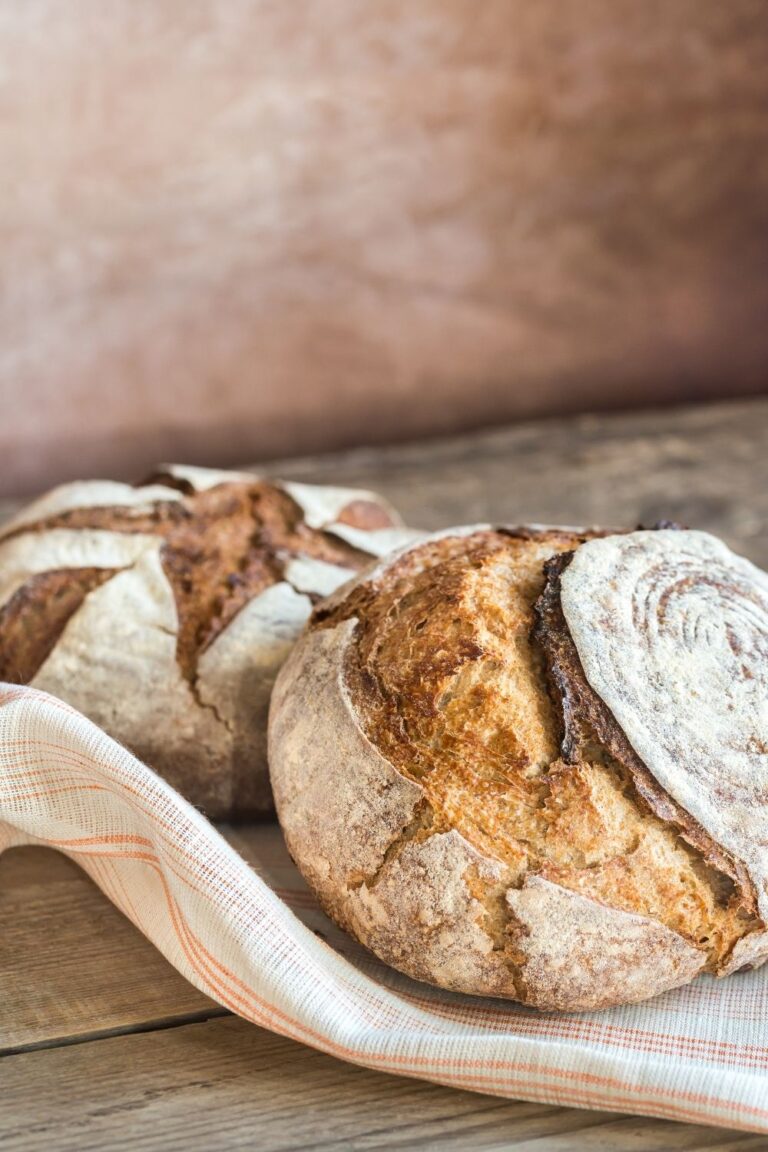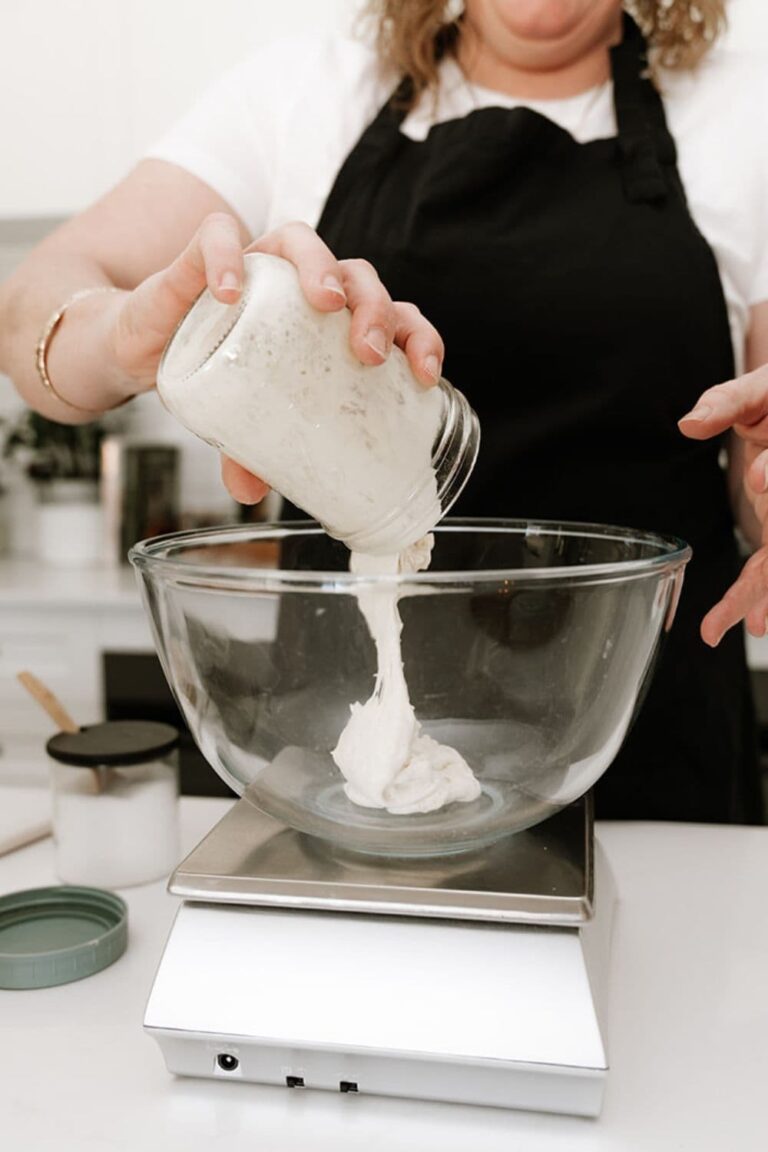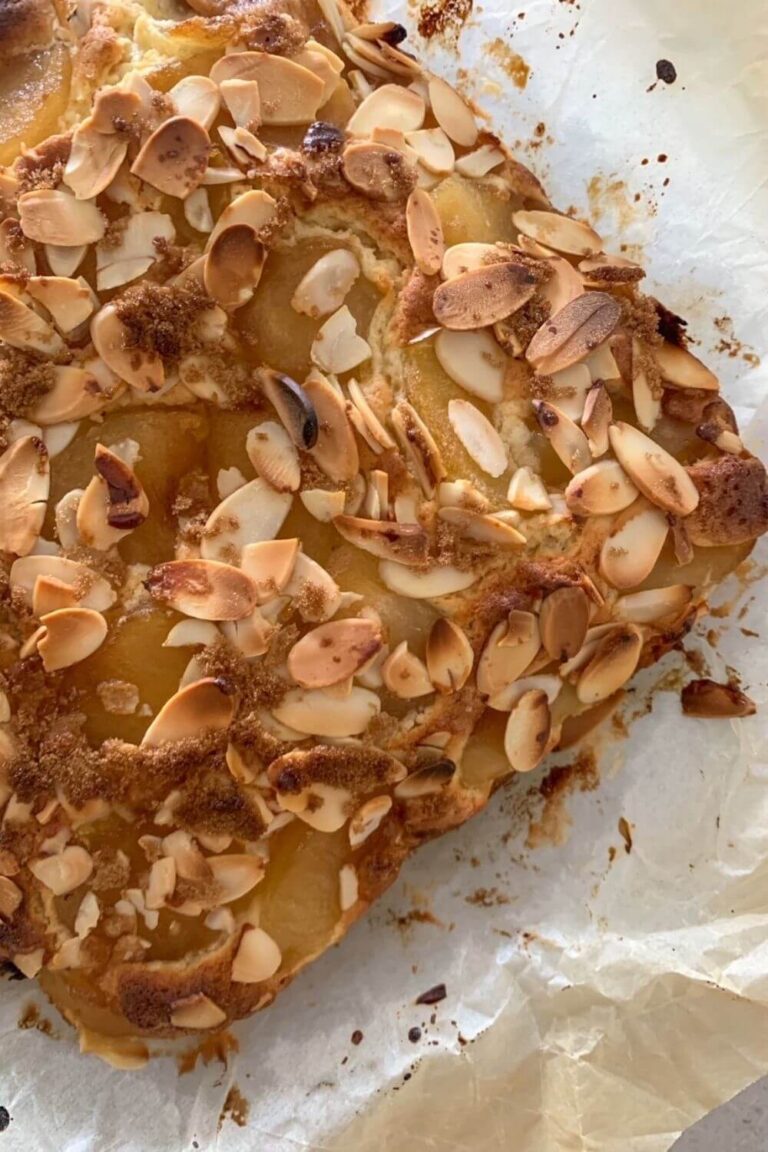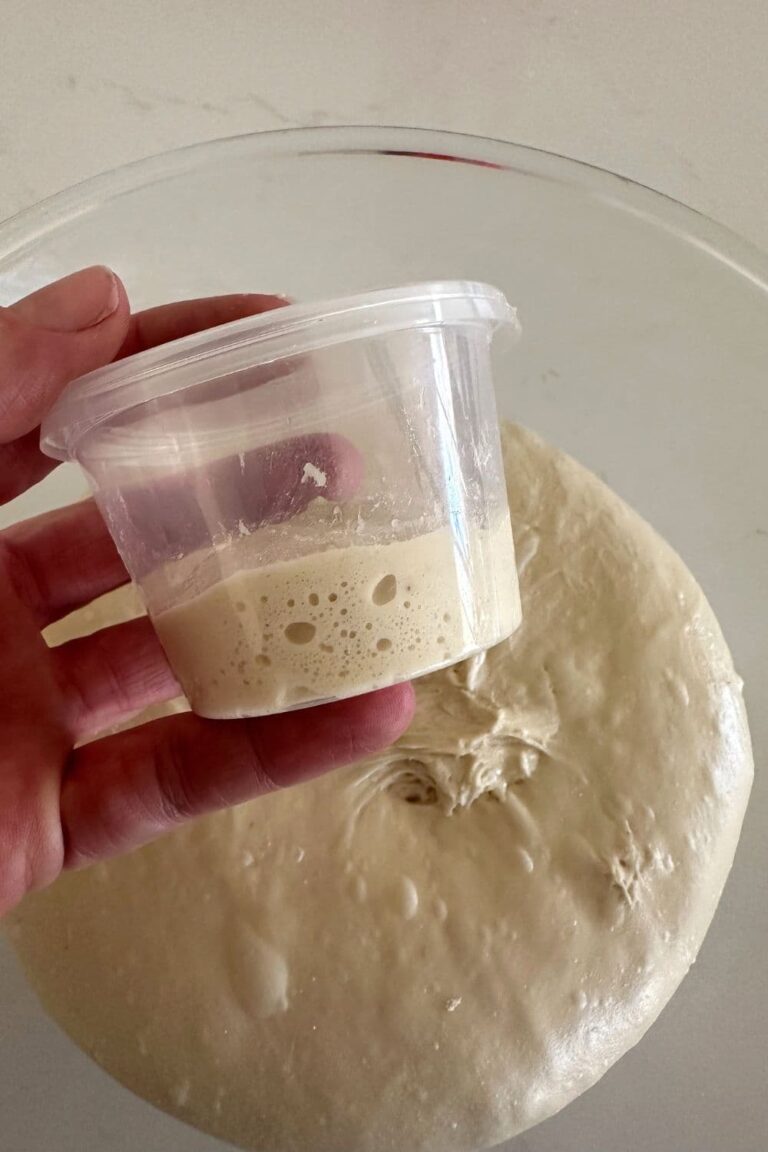How To Make Sourdough Less Sour: A Guide To Making Your Sourdough Less Tangy
This post may contain affiliate links.
Learn how to make your sourdough less sour depending on your personal taste or even family taste. You'll learn what makes sourdough become sour and how to make your sourdough less tangy with a few little tweaks.
Did you know that sourdough doesn't actually need to be sour? Crazy, right? Sourdough really just refers to the actual sourdough starter - that it's dough that has gone sour or fermented.
And while it's totally ok to love those really tangy loaves, they can be a bit too much sometimes - particularly for kids (and husbands haha).
So I thought I'd put together some ways that you can make your bread less sour and perhaps more family friendly.
It's also important to remember that ancient bakers didn't have the technology we have today - hello refrigerator!
Their loaves would not have gone through a cold ferment at all (and it's often this cold ferment that can influence the sourness of your bread).
The best thing about baking your own sourdough is that you have the power to adjust your bread to suit your tastes. Manipulating the sourness of sourdough bread is not as difficult as you might think.
Following these tips, you'll have a more "regular" tasting bread (hehe my kids call store bought bread "regular" lol).
What Makes Sourdough Sour?
Before we can start to make our sourdough bread less sour, we need to know, what makes sourdough sour?
The sourness in sourdough is created by two main acids - lactic acid and acetic acid.
Lactic acid is the same acid that gives yoghurt it's tang - so it's a more mild flavor profile.
It's the acetic acid in sourdough that gives it the unmistakable tanginess. So in order to reduce the sourness, we need to decrease the acetic acid.
You might like my sourdough glossary for more information like this.
How To Make Sourdough Less Sour
If you're looking for a less sour flavor for your sourdough bread, you'll need to work on reducing the acetic acid in your bread.
There are lots of small things you can do that will add up to a less sour flavour in your sourdough bread.
You can choose to do all of them, or just a few, depending on how mild you want the flavor in your sourdough bread to be.
Most of the work you'll need to do will be on adjusting the flavor of your sourdough starter, which has the biggest influence on the sourness of your sourdough bread.
Don't Use Wholegrain Flours In Your Sourdough Starter
Using wholegrain flour in your sourdough starter will make your sourdough bread more sour because it increases the acetic acid your sourdough starter produces.
In order to reduce the tanginess of your bread, avoid using wholegrain flours like rye. Stick to all purpose or plain flour when building your starter.
If you are wanting to use rye flour to boost your sourdough starter, you can still do this, but I would recommend using a blend of ¼ rye and ¾ all purpose flour.
You could just feed your starter rye for a few days to get it going and then switch back to all purpose.
Don't Let Your Starter Get Hungry
When your starter is hungry, it produces "hooch".
To make your bread more sour, you would encourage this. But to create a less sour flavor you want to discourage your starter from getting hungry by feeding it regularly.
If you are keeping your starter on your counter, feed it twice a day to stop it from getting too sour.
If you live in a really warm climate, you might need to give it 3 feeds. In this case, you might be better off keeping your starter in the fridge if you're not wanting to go through too much flour.
If it still develops hooch, that's ok, but do not stir the hooch in when you feed it.
If you're able to, pour the hooch off before you add your flour and water. It will also help to add slightly more water to encourage a more liquid starter. This will make your bread less sour.
Before making any changes to your starter, it's always a good idea make a back up of your sourdough starter, just in case.
Feed Your Starter Before It Peaks
If you're feeding your starter twice a day, it should be enough to reduce the sourness.
If you want to take it a step further, you can try to time your feeding schedule so that you catch your starter before it peaks.
This means that you're never letting it get close to running out of food (and this will ensure you avoid the hooch too!).
Ferment Your Sourdough For A Shorter Time
One of the easiest ways to manipulate the sourness of your sourdough bread is simply to decrease the time that it ferments for.
There a few ways that you can do this and often you will need to experiment to find what works best for you.
The easiest way to decrease the bulk ferment time is to increase the amount of starter that you use.
Try doubling your amount of starter and seeing if that makes a difference.
You could also add some sugar or honey to your dough. Both of these will reduce the ferment time of your dough because they provide a fast food for the yeast. This will in turn decrease the sourness of your sourdough.
You'll find a full guide to adding sugar to your sourdough here and honey here.
Skip or Reduce Your Cold Ferment
The cold retard, which happens between shaping your loaf and baking it, will generally make your loaf more sour.
There are a few ways you can tackle this.
You could skip the cold ferment all together - just let your loaf rest on the counter a little after shaping before you score and bake.
While this practice is perfectly ok (ancient bakers never had fridges, right?) it may make your bread harder to score and it may not have the same oven spring as refrigerated dough would.
The other option would be just to reduce your cold ferment so that your dough isn't in the fridge for as long.
You could even just pop it in the freezer for an hour after shaping to make scoring easier, but not necessarily give the bacteria a chance to work too hard.

I hope these tips help you to adjust the sourness in your sourdough bread to a more mild flavor.
Further Reading
If you enjoyed these tips, you might like these ideas:
If you're looking for more tips to help your sourdough starter, you'll find our troubleshooting guide here.
If you're looking for tips to improve your sourdough baking, you'll find 10 things no one ever tells you about sourdough here.
Want to nail your sourdough ear every single time? Check out these tips.







Hi, Kate,
I have recently discovered your wonderful website. My goal is not to bake sourdough bread as we have a wonderful bakery here that we hare happy to support. (The Firehouse Bakery, Delgany, Ireland). They have given me a large cup of their starter so I am on my way toward my aim of creating sourdough English muffins. Using your recipe I have finally produced muffins that look and feel nearly right but the sourdough flavor is not quite strong enough. From your piece about reducing the sour taste I conclude that I should:1) use more rye starter (I use 10g rye to 40g white) for each daily feed, 2) use fine whole wheat (called wholemeal here) rather than white strong (bread) flour for the entire recipe, and 3) proof for longer (overnight at the moment). Does that approach seem right and is there anything else I can do? I have seen citric acid suggest but not sure if it is good to do and how much to use. All suggestions are appreciated. Karen
Dear Kate
I am ever so grateful for your fabulous Sourdough website. I have been rumbling around trying to make a palatable Spelt Sourdough Loaf and finally with all your helpful advice I think I am getting there.
Sending you a bunch of roses!
kind Regards
Anne
Awwhhh that so awesome!! I'm so glad I could help 🙂 ps roses are my favorite! xo
Any advice on what to do with the loaves that are already baked and too sour for us? Maybe with jam or honey might be ok 😅
I'm here because I asked if sourdough could be less sour, which I thought might be a daft question but turns out to have a very comprehensive answer here. Thank you so much. I am now going to read the rest of your recipes and articles. I seem to have made two pretty fair loaves using and double tin method to create a dutch oven (and a loaf that fits in the toaster) but I'd really like to master the loaf in a more artisan form! I'm currently having trouble getting the final folds tight enough so that it looks like it's about to burst open when you slash it. Perhaps this is because I am using a no-knead recipe? Hope in to find some answers here. Thank you so much for sharing your experience and knowledge.